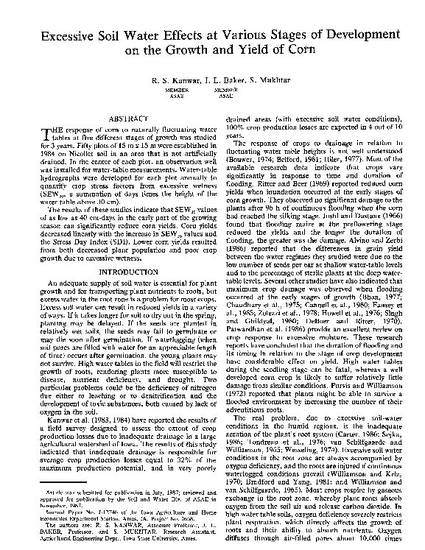
The response of corn to naturally fluctuating water tables at five different stages of growth was studied for 3 years. Fifty plots of 15 m x 15 m were established in 1984 on Nicollet soil in an area that is not artificially drained. In the center of each plot, an observation well was installed for water-table measurements. Water-table hydrographs were developed for each plot annually to quantify crop stress factors from excessive wetness (SEW30, a summation of days times the height of the water table above 30 cm). The results of these studies indicate that SEW30 values of as low as 40 cm-days in the early part of the growing season can significantly reduce corn yields. Corn yields decreased linearly with the increase in SEW30 values and the Stress Day Index (SDI). Lower corn yields resulted from both decreased plant population and poor crop growth due to excessive wetness.
Available at: http://works.bepress.com/rskanwar/156/

This article is from Transactions of the ASAE 31 (1988): 133–141, doi:10.13031/2013.30678. Posted with permission.